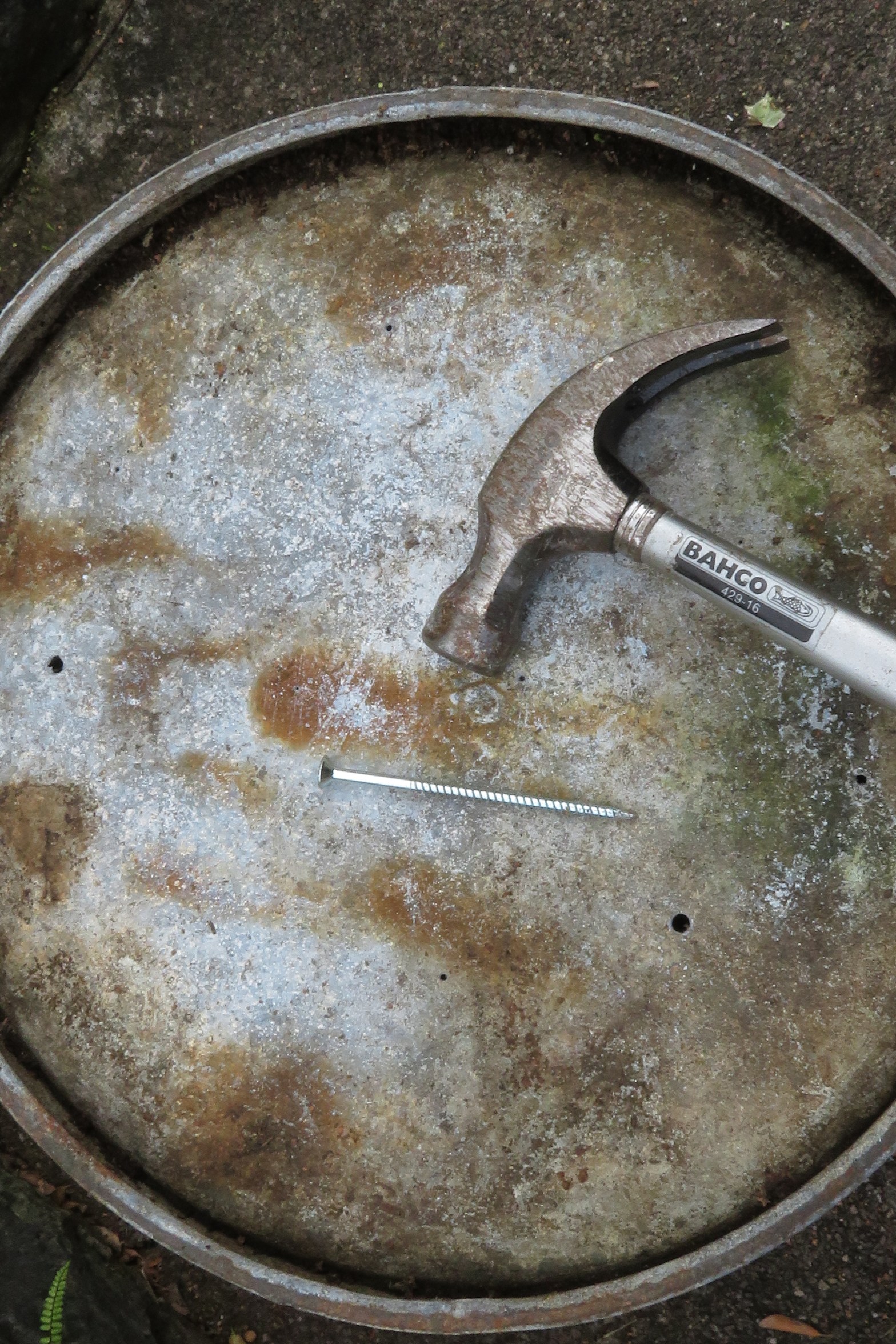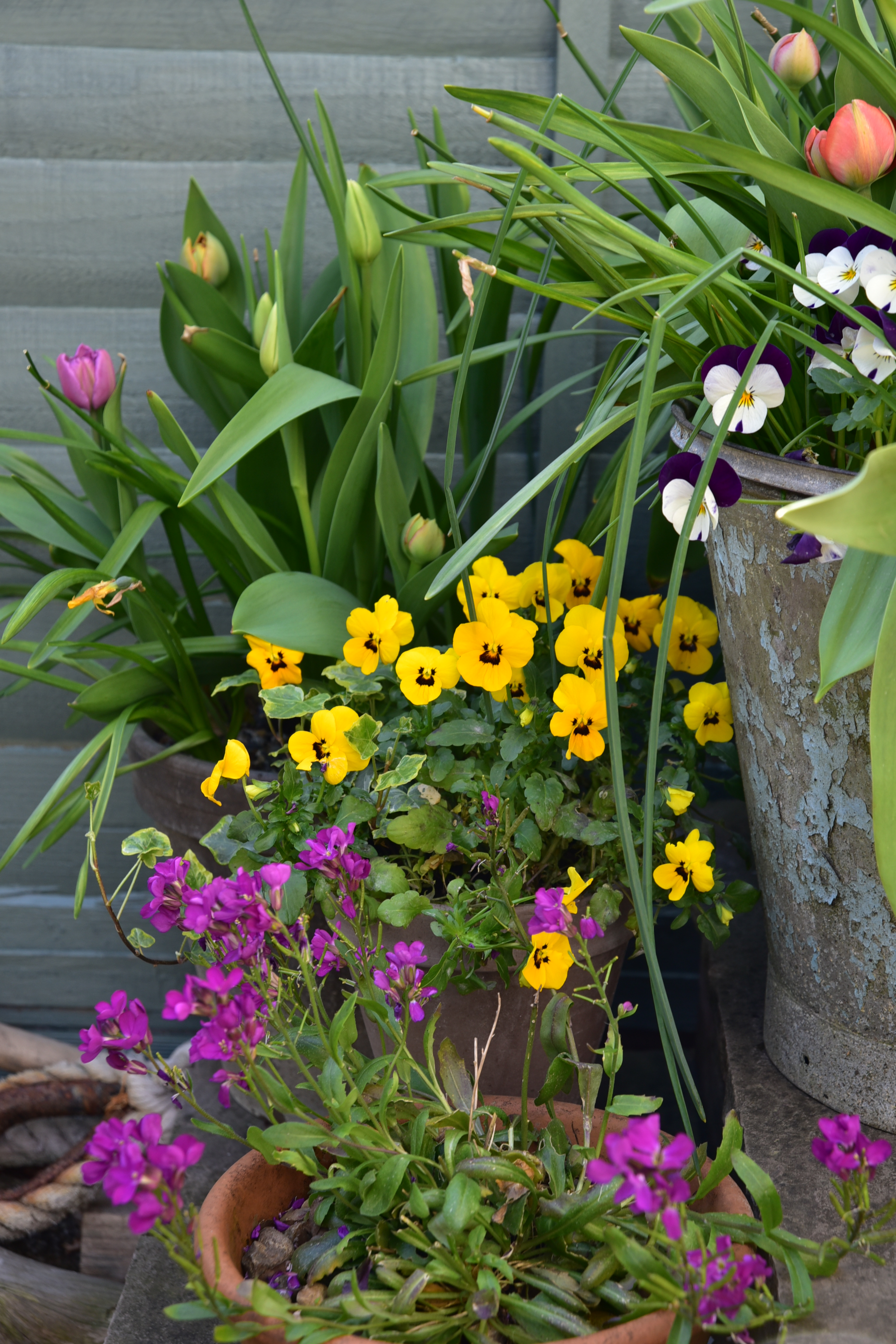My son used to love Bob the Builder when he was tiny and I did rather like the repetitive use of their tag line, ‘reduce, reuse, recycle’. I always hoped that maybe instead of becoming part of the throw away society that we seem to have grown into, ‘Can we fix it?, Yes we can’, and recycling, would seem logical to him. It hasn’t always worked out that way. I blame the grandparents…
But, in gardening, such green thinking has always been part and parcel of most gardeners mind set. Growing things from seed collected from your own plants. Making little newspaper pots or using plastic milk bottles as seed starters, old tights as tree ties, fallen twigs as stakes and leaf mulch saved from the autumn, and a visit to the local stable to quite literally shovel sh!t to take home to rot down for free garden manure. As an early teen, on bike rides with my best friend, when passing a big dollop of the stinky stuff, she would immediately say, ‘ Dont tell my dad, he’ll be down the road with his wheel barrow to get it. He’s soooo embarrasing!’ (Her parents had the had the most beautiful garden.)
The most wasteful part of our lives, the part of society that drives us to endless consumption is often fashion. What is ‘in’? What looks good? What has everybody else got? How can I feel better right now? Throw money at it! But you don’t always have to. In gardening, as in all fashions, there is still the ever present change of taste for colours, designs garden furniture and even plants! Once it was begonias and prize spherical Daliahs, but now it’s foxgloves and grasses that feature so heavily in award winning show gardens.
I suppose for the large part it is the job of buying a new plant, and fully mature specimen for that instant buzz of joy, that has made gardening more accessable for more people. That joyful day trip out for lunch, that comes at a certain age to the ultimate destination, the garden centre. Add to that the promise of returning home and bringing a little bit of all that loveliness back to your own garden. Garden centres offer instant gratification to gardeners in the same way as Primark does for someone out for a quick fashion fix. But quite often that quick fix fails to bring the long term joy you had hoped for. An impulsive buy of the wrong plant for a space can lead to disappointment, so plan ahead.
I personally love to watch the fashions change, and the new planting colour schemes and styles evolve from year to year, but along side that, I am still deeply rooted in my maternal grandparents frugal gardening skills and my Grandads shed. The master of fixing, of building and of over engineering but also simple modifications of house hold objects. The most basic, the pan on a chain that was used as a water scoop for filling his watering can, and hung on a specific hook on a heavy metal frame above the water but. My Granny who would pinch cuttings off plants and grow masses of new plants on her window sills and prick out seedlings into pots that she had used for years and place in the cold frames made from old bricks and window frames.
So what to do, when your lavender has totally outgrown it’s space, but you don’t want to waste it? Well, take cuttings from the fresh new growth, grow new plants. Dig up the old one and hope that you can move it somewhere else. For me, this was uncovering an old metal bin, and turning that into the lavenders new home. It might work, it might not, but it hasn’t cost a penny, and old metal containers containing mediteranean plants are pretty ‘in’ at the moment.
Walking to school to collect my daughter, I spied a lovely small metal filing cabinet in a skip It had to be mine. Much to her horror, on the way home I dragged it out. It is now a very find looking modern planter. For free! Basically, if it holds water, but can have drainage holes added, it can be a planter. Find your style.
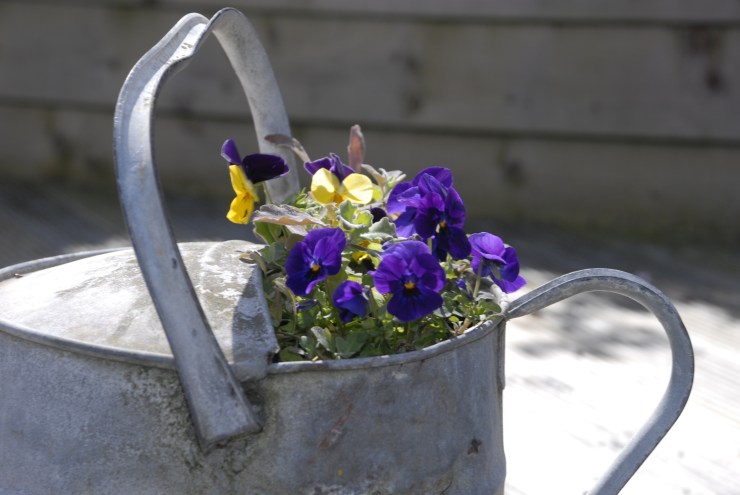
Watering can 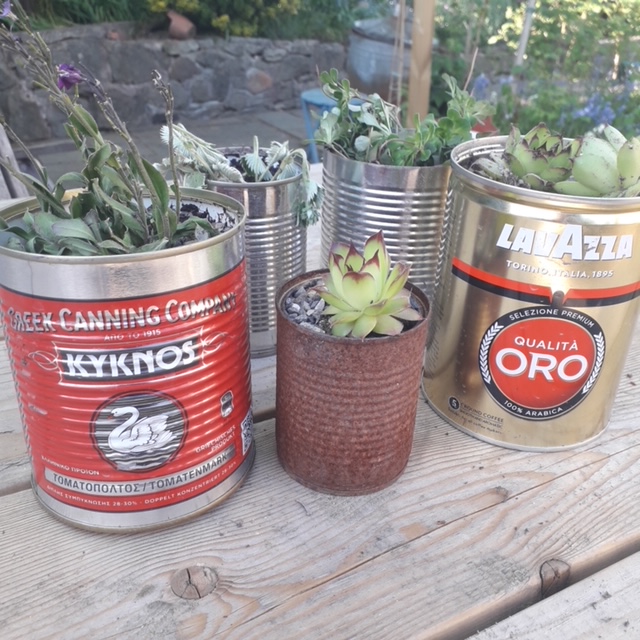
Old food tins 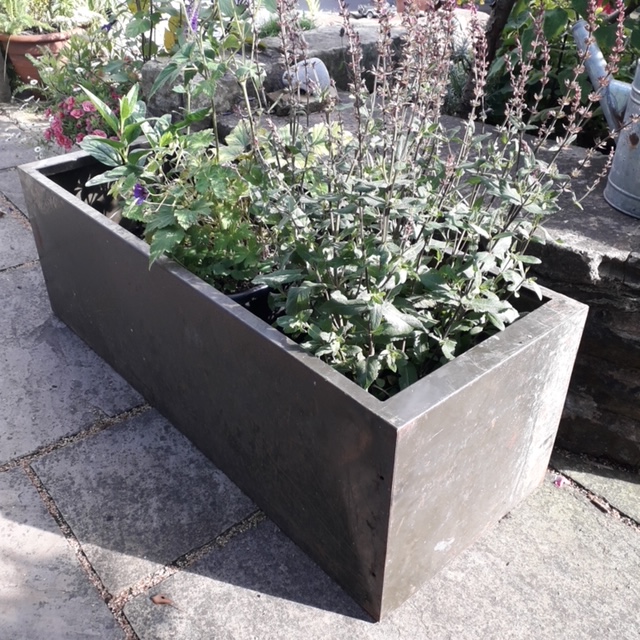
Filing cabinet planter
